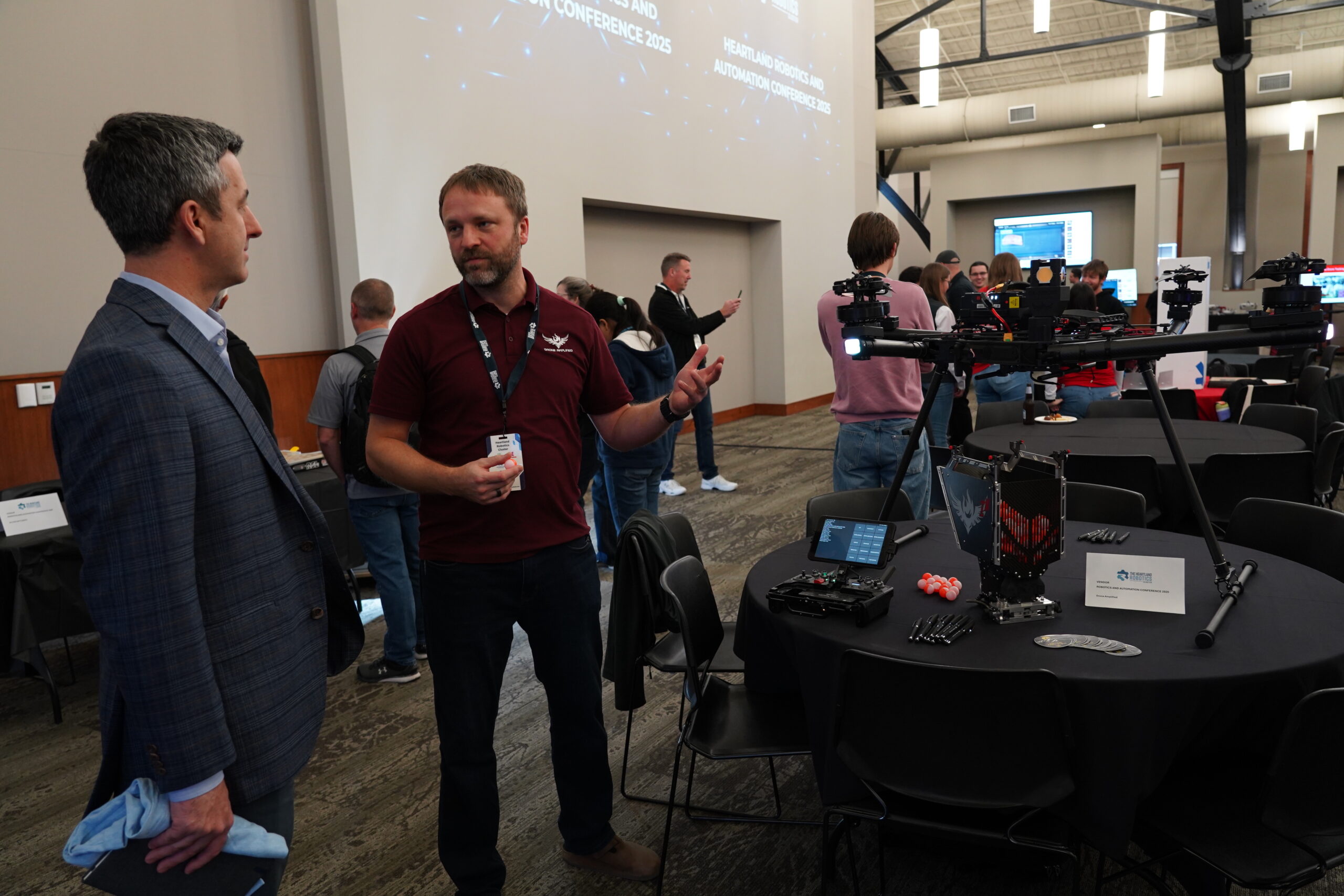The following article is part of a special insert in the June 3-9 issue of The Reader, a weekly newspaper focusing on the area’s culture. The insert, titled disRUPT, is the result of a partnership between The Reader, Scott Technology Center – an incubator and data center aiming to enhance technology and innovation in Omaha’s business community – and Silicon Prairie News.
Artist rendering
Vision meets reality with fast-forward results at the University of Nebraska-Lincoln’s (UNL) Innovation Campus, a “public-private partnership” facilitating collaboration among researchers, businesses, students, faculty, entrepreneurs, city planners and more.
The purpose: Create an encouraging environment conducive to success — an environment that welcomes creative problem-solving, sparks new ideas and promotes Nebraska’s potential to provide powerful, positive change in a global environment.
“The real story is about the vision for the Nebraska Innovation Campus (NIC) and taking it forward,” said Jennifer L. Dam, AICP, assistant director, campus planning and space management, Institutional Research and Planning at UNL. “The vision is to link private sector businesses and researchers and the university, and one goal is to take innovations to the market in Nebraska.”
What It Is
Located on the 249-acre, former site of the Nebraska State Fair (north of UNL’s City Campus), NIC is a long-term project already underway. What’s more, it is an endeavor with both roots and wings, supporters note.
“The significant recent growth of research, both at UNL and at the University of Nebraska Medical Center, holds promise for attracting private sector partners who may wish to collaborate or commercialize the products of University research,” according to the UNL’s vision statement for the initiative. “NIC seeks to leverage this opportunity, to create a development that will permit private sector companies to locate on NIC but only if they have a significant relationship to UNL.”
While some think-tanks and innovation facilities promote a specific research focus, Dam said Nebraska Innovation Campus will offer a wide range of possibilities for forward-thinkers and creative people.
“This will provide exciting opportunities for graduate students, as well as job opportunities for students across the state,” she explained, “and the focus is not just on computer science, not just on engineering. This campus offers tremendous benefits to the state as a whole.”
With 1.8 million gross square feet of buildable space, NIC promises plenty of room for partnerships, too. Plus, campus planners point out nearby Interstate and airport access make the NIC’s Lincoln location ideal.
Artist rendering, aerial overview
Who’s Involved
Great ideas don’t happen in a vacuum. While Dam acknowledges the community has been instrumental in supporting the endeavor, several standout leaders, and university departments, are working together to make the vision a reality.
Chief among these are UNL Chancellor Harvey Perlman and NU President J.B. Milliken. They share a similar mindset: NIC could mean new revenue streams for the school, and might offer increased applications for research.
Faculty is on board for the project; and, UNL notes key NIC “collaborative faculty research groups” already include:
- Nebraska Center for Energy Science Research
- Nebraska Center for Materials and Nanoscience
- Center for Plant Science Innovation
- Gastrointestinal Tract (Gut) Function Initiative
- Nebraska Nutrigenomics Gateway
- Mid-America Transportation Center
- ESQuaRed (a laboratory for empirically-based software quality research and development)
- Global Water for Food Institute
Such interest is rounded out by enthusiastic response to Omaha Noddle Companies’ Jay Noddle, whose research suggests NIC may produce as many as 5,525 jobs. Not to mention a potential increase in earnings of nearly $267 million.
How it Works
At the heart of the project is the combined power of government, the private sector and the university, Dam said. She also said meeting the needs of this diverse group means creating work, research and study spaces. NIC’s researchers will be complemented by state-of-the-art environments, campus planners said, with seven key “related university facilities,” including: Food Processing Center, Biological Process Development Facility, Jeffrey S. Raikes School for Computer Science and Technology, Holland Research Computing Center, Diocles Extreme Light Laser Laboratory, Center for Biotechnology and Agricultural and Development Center.
“The program for the innovation campus would include facilities for university research, incubator facilities and labs and private sector research, also bringing the innovation component,” Dam said, adding such a strategy will allow organizations to hire undergraduate and graduate students to work in applied research and help move new innovations to market. While planners see several advantages to the new campus, private sector organizations are drawn to the opportunity of forming an “intimate partnership” with the University, as well as capitalizing on the institutions “research enterprise,” Dam explained.
Why Nebraska?
Just as similar campuses are gaining momentum at select locations nationwide (North Carolina State University’s Centennial Campus is one example), Nebraska offers unique opportunities for attracting talented students and faculty while garnering support from area businesses.
For example, the state is often applauded for its below-national-average cost of living, and its higher-than-average high school graduation rate; characteristics that offer advantages for employers and residents.
Additionally, Nebraska operates, by law, debt-free. This means residents (as a whole) typically weather economic storms more successfully than their counterparts in other, more flamboyant, locales.
Nebraska also ranks as “a safe place to live, work and do business. The violent crime rate in Nebraska is 40 percent less than the U.S. average,” according to the Nebraska Department of Economic Development.
Best state attributes aside, Dam said Lincoln “is really moving forward and doing some tremendous things. The mayor and the city staff have been incredibly supportive. They’ve bent over backwards to help make this happen.”
What’s Ahead
With so many opportunities for growth, Dam said “one of the challenges of this project is once you get the concept approved, everyone wants to see it tomorrow. This project may take 20-25 years to build out.”
As with any initiative for change, creating a foundation for moving forward can be tenuous. Not so in the case of Nebraska Innovation Campus. In fact, the Lincoln community addressed the impact of UNL’s master plan as early as 2006. This included discussions of an innovation campus designed to encourage collaboration between public and private sectors.
Construction cost is estimated at $801 million. “We’ve removed a number of the pole barns and metal buildings from the site,” Dam explained. “We envision a true public/private partnership, where we’re all working together to expand knowledge.”
Eventually, the public/private innovations will help farmers, Dam said. “The establishment of the Global Water for Food Institute is important not just Nebraska, but internationally, too.”
The University of Nebraska-Lincoln received $122 million in research funding last year, an amount researchers say will only increase in light of NIC.
Nebraska Innovation Campus is under the governance of the University of Nebraska. It is managed by a not-for-profit 501(c)3 entity, the Nebraska Innovation Campus Development Corporation (NICDC), which can accommodate private sector interests in confidentiality, speed in making decisions about partnership details, and flexible financing. For more information, visit innovate.unl.edu.




